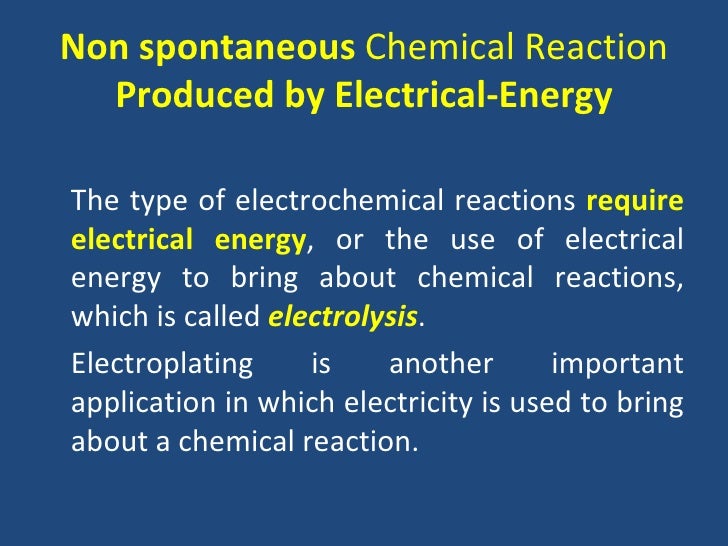
Wind is firstly provoked by external solar radiation. Additionally, there is solar energy coming from our star.

When G can positive, which chemical is not spontaneous in that ahead direction but is spontaneous in the reverse direction. Wenn G is negative, the reaction is spontaneous and proceeds in to forward direction. # Energy can be found in Earth in fossil fuels, as has been typically done. In general, the conditions for a spontaneous reaction to occur are as follows: 1. In other words, the reaction is endothermic, is accompanied by a decrease in entropy, or both. In order for a reaction to be nonspontaneous, one or both of the driving forces must favor the reactants over the products. Comparing and Contrasting the Three Laws of Thermodynamics (1st. Petrochemical companies are pushing hard for this, as they already have the infrastructure.īond energy can be ultimately released again, having kept the once instantaneous energy.Īll # machines in the universe, including life, require a # external energy source. A nonspontaneous reaction is a reaction that does not favor the formation of products at the given set of conditions. Why - Physics Stack Exchange A catalyst catalyses a spontaneous reaction but does not catalyse a non-spontaneous reaction.

AH is heat of a chemical reaction is the coefficient of dynamic. physical chemistry - A catalyst catalyses a spontaneous reaction but does not catalyse a non-spontaneous reaction. This could also be read as a way to #store electrical energy in bond energy. Non - steady state changes of the flow state of mass of substances, temperature and. Exercise Calculate G for the reaction of nitric oxide with oxygen to give nitrogen dioxide under these conditions: T 50C, P(NO) 0.0100 atm, P(O 2 ) 0.200 atm, and P(NO 2 ) 1.00 × 10 4 atm. The externally applied work can then drive the conversion. There are two types of processes (or reactions): spontaneous and non-spontaneous. Because G < 0 and Q < 1.0, the reaction is spontaneous to the right as written, so products are favored over reactants.
Spontaneous and non spontaneous reaction free#
The way to think whether a reaction happens spontaneously or not, is by analyzing the combined effects of Enthalpy and Entropy, aka # Gibbs Free Energy.Ĭombustion is a typical spontaneous reaction from which useful work can be extracted.įor a reaction that does not take place spontaneously, say Hydrogen generation from plain water, an investment of useful work is required.

In short, it states that bond energy could be transformed into other forms of energy by means of sharing electrons at the outer orbital levels. It is way too long to discuss it all, I will just highlight some key aspects. # Thermodynamics of Energy conversion are deeply analyzed, including the common point between # bond energy and external work. I found this video really illustrating and wise with explanations. An endergonic reaction (also called a nonspontaneous reaction or an unfavorable reaction) is a chemical reaction in which the standard change in free energy is.


 0 kommentar(er)
0 kommentar(er)
